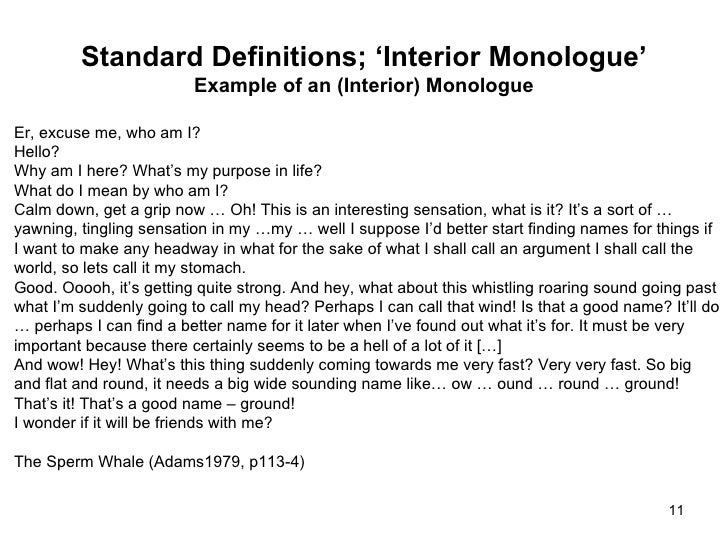

Projections of interior musings, often deeply ambiguous, are to found in the poems of Tristan Corbière, Jules Laforgue, Stéphane Mallarmé, Arthur Rimbaud, and Paul Valéry. This seems to have been taken up by the French Symbolist poets and their associates. The English dramatic monologue, as used by Browning and Tennyson, purports to be spoken, but it is often the case that speech dissolves into reverie. The device is distinguished from the dramatic monologue by the fact that the thoughts are unspoken. To other critics, interior monologue is the larger category and stands for all methods of self-revelation, including for instance some kinds of dramatic monologue according to this view, stream of consciousness refers to an uninterrupted flow, in which logic, conventional syntax and even at times punctuation are abandoned.

Some critics argue that Stream of consciousness includes all imitations of interiority according to this view, the interior monologue is one method among many. There is, however, some dispute as to which of the two is the larger term. The phrase “Interior monologue’ originates in an essay on James Joyce by Valéry Larbaud and is often regarded as synonymous with ‘stream of consciousness’ Interior monologue definition: a literary attempt to present the mental processes of a character before they are formed. It consists of inner speech, where you can hear your own voice play out phrases and conversations in your mind. The expression of a characters thoughts so that the audience can witness (or read, in literature) what is going on inside that. Interior monologue is an extended representation in prose or verse of a character’s unspoken thoughts, memories, and impressions, rendered as if directly ‘overheard’ by the reader without the intervention of a summarizing narrator, prompted by conscious experience or arising from the well of the subconscious. Internal monologue means more than just pondering over your own thoughts.


 0 kommentar(er)
0 kommentar(er)
